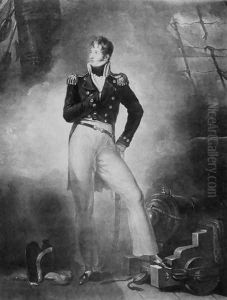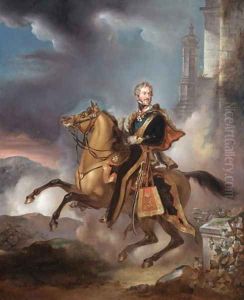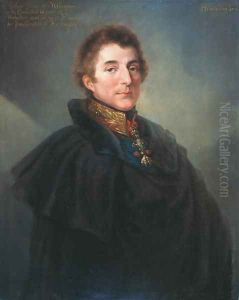Peter Eduard Stroehling Paintings
Peter Eduard Stroehling, also known as Pierre Edouard Dagoty, was a notable painter of German origin who made significant contributions to the European art scene during the late 18th and early 19th centuries. Born in 1768 in Düsseldorf, which at the time was part of the Holy Roman Empire, Stroehling demonstrated an early affinity for the arts, which led him to pursue a career that would see him travel and work in various parts of Europe, including Italy, England, and Russia, among others.
Stroehling's artistic journey began in earnest when he moved to Italy to study art, a common practice among aspiring artists of his era seeking to refine their skills and draw inspiration from the Renaissance masters. His work soon caught the eye of influential patrons, and by the late 1790s, he had established himself as a portrait painter of repute. His ability to capture the likeness and character of his subjects with a keen eye for detail and a vibrant palette earned him commissions from some of the most prominent figures of his time, including royalty and members of the aristocracy.
In the early 1800s, Stroehling's career took him to England, where he continued to build his reputation as a portraitist. Among his notable works from this period are portraits of the Duke of Wellington and other distinguished military and societal figures. His style, characterized by a blend of realism and romanticism, appealed to the tastes of the British elite, further cementing his status as a sought-after artist.
Stroehling's talents were not confined to portraiture alone; he also produced historical and allegorical paintings, demonstrating a versatility and depth of knowledge in classical subjects. However, it is his portraits that have left a lasting legacy, celebrated for their elegance, sophistication, and the insight they provide into the personalities and fashion of the era.
Peter Eduard Stroehling's career reflects the life of an artist deeply immersed in the cultural and social currents of his time, adept at navigating the demands of his patrons while maintaining his artistic integrity and vision. His death in 1826 marked the end of a fruitful career, but his works continue to be admired for their technical skill, artistic beauty, and historical significance. Stroehling's contributions to the art world have ensured his place among the notable European painters of his generation, remembered for his remarkable ability to capture the essence of the Age of Enlightenment and the Napoleonic era through his captivating portraits.


